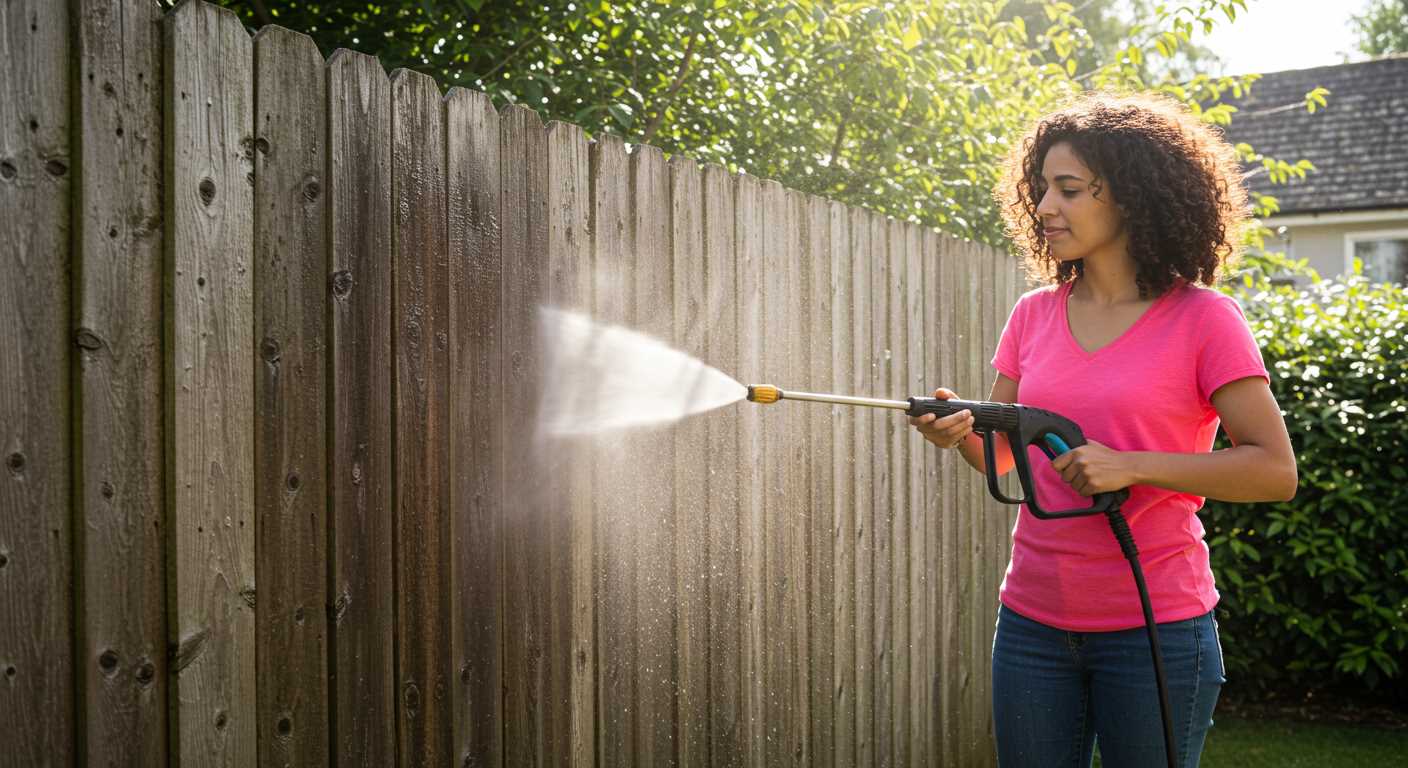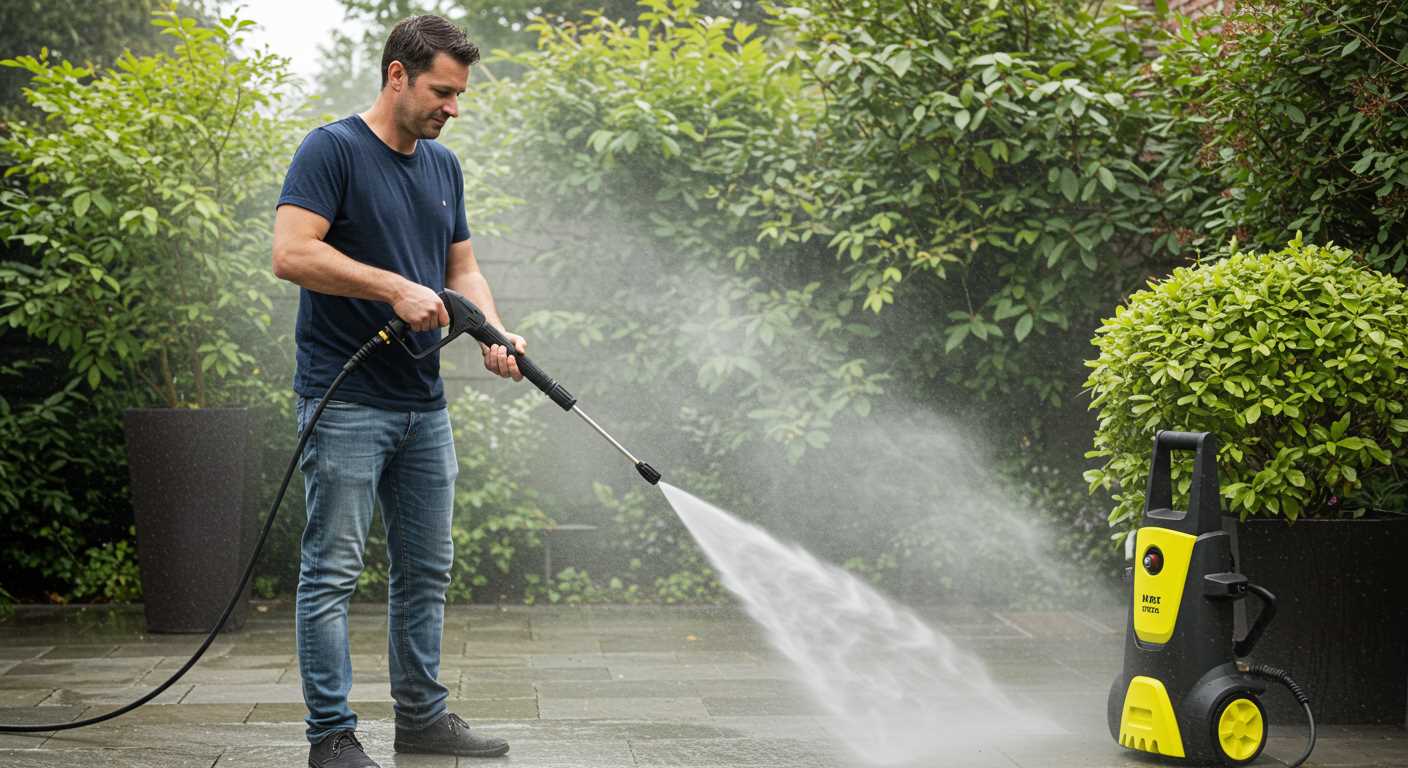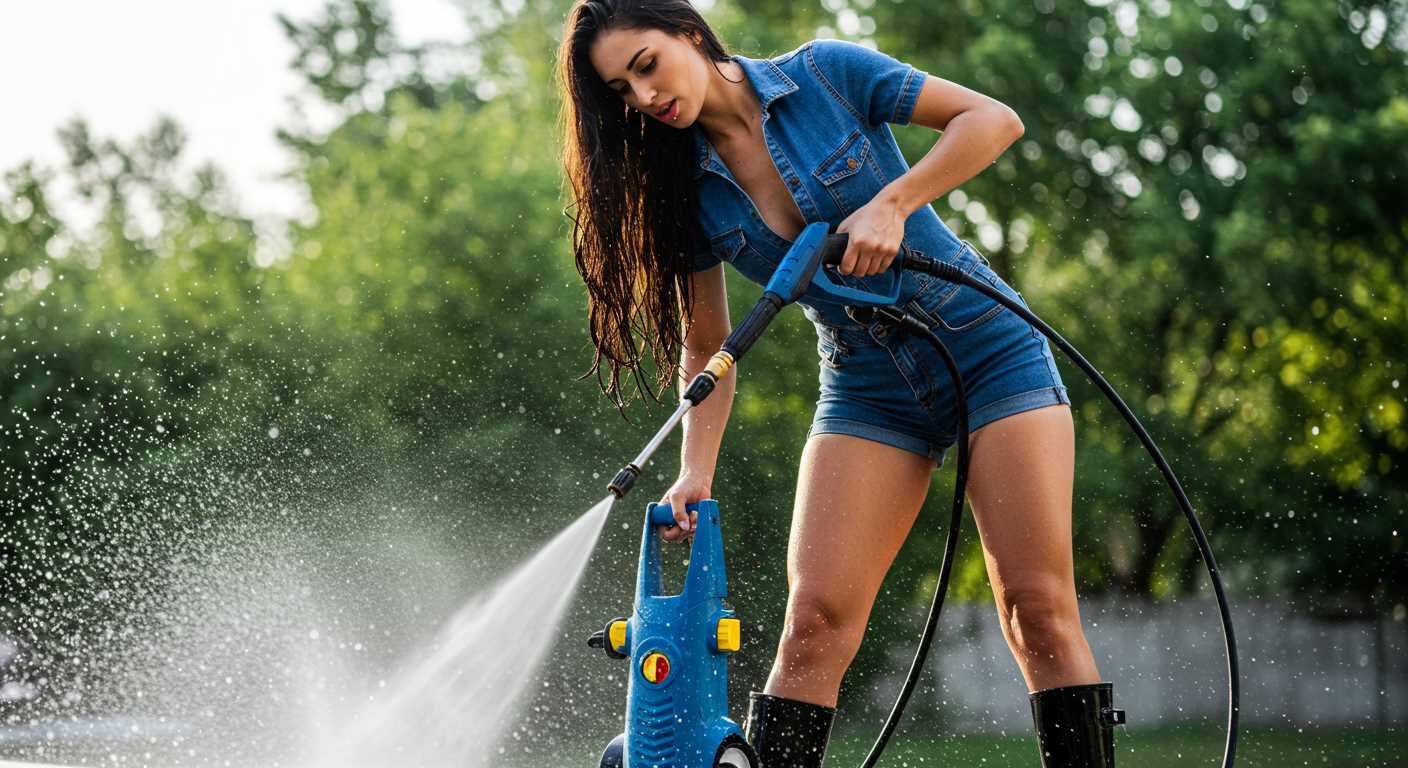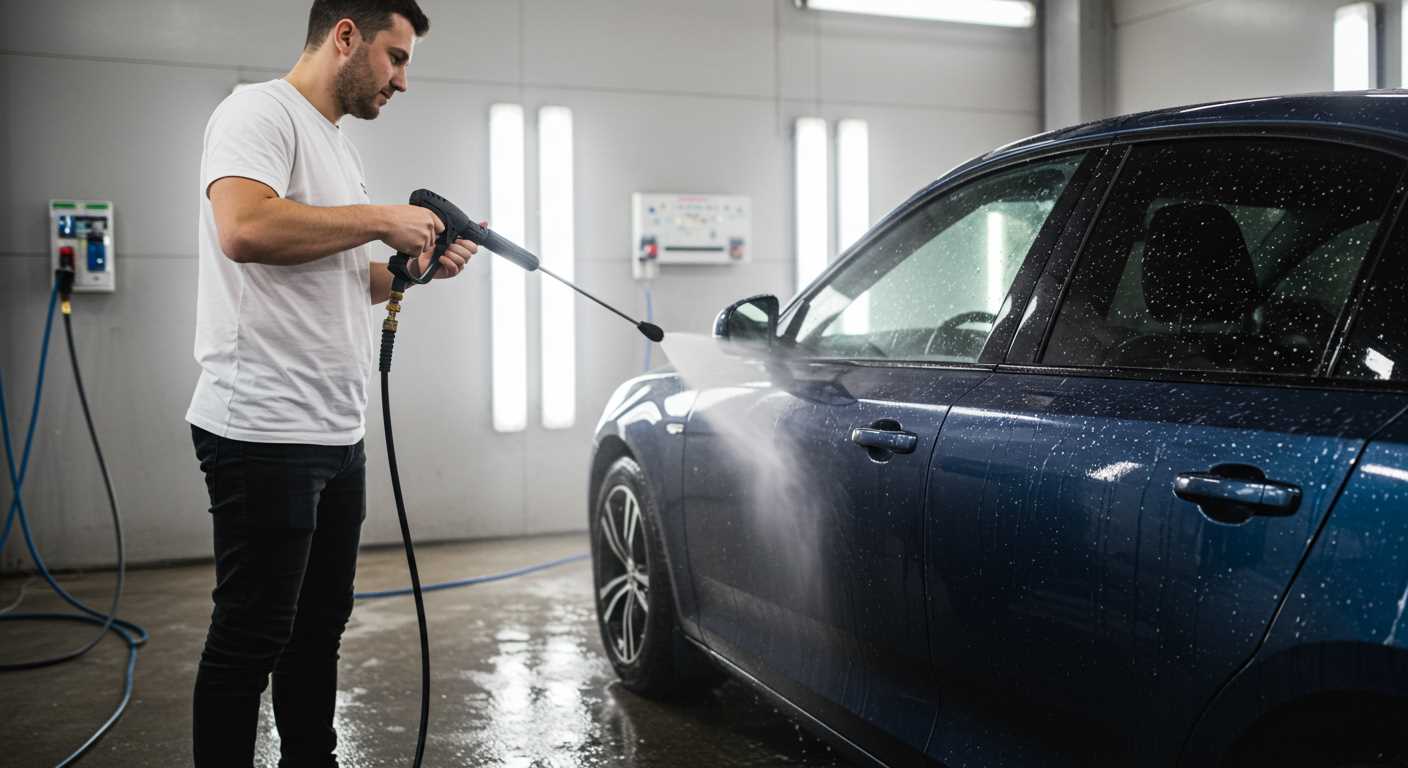



For the best outcome, mix a solution of white vinegar and water in equal parts. Use this to treat stubborn stains effectively, applying it generously to the affected areas. The natural acidity of vinegar works wonders on grime and discolouration, making it an ideal choice for a variety of surface materials.
After applying the vinegar solution, allow it to sit for at least 30 minutes. This will enable the cleaner to penetrate and break down any built-up dirt. It’s often advisable to tackle one section at a time, ensuring thorough coverage and avoiding the risk of the cleaning solution drying out before it can work its magic.
Next, utilise a stiff-bristled brush to scrub the area. Opt for a tool with natural or synthetic bristles for optimal scrubbing power without risking damage to your surfaces. For additional marine life–such as moss or lichens–consider adding a small amount of baking soda to the vinegar solution for enhanced cleaning ability.
Completing the task involves rinsing the area thoroughly with warm water. A garden hose is sufficient for this purpose–ensure that you’re washing away any remaining cleaner and debris. This method not only preserves the integrity of your surfaces but also maintains their aesthetic appeal remarkably.
Cleaning Options for Paving Stones
Utilise vinegar mixed with water in a spray bottle for a natural solution. A 1:1 ratio effectively targets stains and grime. Apply generously, let it sit for about 10-15 minutes, then scrub with a stiff-bristled brush.
For stubborn dirt, try baking soda combined with warm water to create a paste. Apply the paste directly to the affected areas and leave it for around 30 minutes before scrubbing it away with a brush.
For optimal results, employ a mixture of dish soap and warm water. Using a mop or sponge, agitate the surface gently. Rinse thoroughly afterwards to avoid residue.
If moss or weeds are present, a solution of salt and water can be effective. Mix three parts water with one part salt and apply on the affected areas. Be cautious, as this mix can harm surrounding vegetation.
Regular sweeping helps maintain the appearance. Combine this with occasional scrubbing from a soft-bristled broom to prevent the buildup of dirt.
Consider using a weed torch for an eco-friendly approach, targeting any weeds or unwanted growth directly. Ensure safety measures when using this method.
Gathering Necessary Cleaning Supplies

I recommend assembling a few key items to effectively tackle dirt and stains on your outdoor surfaces. Start with a broom or stiff-bristled brush to dislodge debris and loose particles. This sets the stage for a deeper clean.
Cleaning Solutions
Select a suitable cleaner tailored for outdoor surfaces. An eco-friendly vinegar solution is an excellent choice for regular maintenance. For more stubborn stains, a mix of baking soda and water can restore the appearance of your surfaces. Always test any solution on a small area first.
Additional Tools
Gather a bucket, sponge, and garden hose for rinsing. A scrub brush or an old toothbrush can help with stubborn spots, especially in grout lines. Consider using a squeegee for easy water removal if your surfaces are sloped.
A pair of gloves protects your hands and provides a better grip on tools. Safety goggles shield your eyes from splashes while working. Having these items handy will streamline the entire process and ensure effective results.
Removing Loose Debris and Dirt
Begin by gathering a stiff-bristled broom. Sweep across the surface to dislodge and collect any loose debris. Focus on corners and edges where dirt often accumulates.
Using a Leaf Blower
If available, a leaf blower is an effective alternative. Aim it at lower settings to avoid displacing any settled stones while moving dust and small particles off the surface.
Manual Collection
After clearing, inspect for any larger pieces of debris. Use a dustpan to collect items like leaves or twigs. If persistent dirt remains, consider using a handheld vacuum or a manual brush for stubborn spots.
For any sand or fine particles between the seams, a narrow nozzle attachment can help direct airflow to extract them efficiently. Ensuring the area is free of larger debris will facilitate subsequent cleaning stages.
Preparing a Cleaning Solution for Pavers

To create an effective mixture for cleaning stone surfaces, start with a base of warm water and white vinegar. Combine a ratio of 1:1 for basic dirt and grime. For tougher stains, such as oil or grease, include a few drops of dish soap into the mix.
Ingredients Needed
| Ingredient | Purpose |
|---|---|
| Warm Water | Dilutes and activates the cleaning agents |
| White Vinegar | Natural disinfectant and stain remover |
| Dish Soap | Breaks down oily substances |
| Baking Soda (optional) | Enhances cleaning power for stubborn stains |
Mix these components in a bucket. Stir gently until combined. Dip a stiff-bristled brush into the solution for scrubbing. If using baking soda, add it after mixing the initial batch to create a paste-like consistency, particularly for those stubborn spots. Adjust the concentration based on the severity of the staining.
Always test the solution on a small, inconspicuous area ahead of a full application to ensure compatibility and avoid any unintended reactions with the surface material.
Applying the Cleaning Solution Evenly

To achieve thorough results, distribute the cleaning agent uniformly across the surface. Use a long-handled brush or mop to ensure an even application. This method allows the solution to penetrate the crevices and adhere to the surface, enhancing its cleaning effect.
Techniques for Uniform Distribution

Begin at one edge and progressively move across, overlapping each stroke slightly. This technique minimises streaks and ensures every section receives adequate treatment. For larger areas, consider working in sections to maintain control over the application process.
Checking Coverage
After applying the solution, inspect the surface for any missed spots. If some areas appear drier, reapply the solution specifically to those patches. Allowing the agent enough time to work on grime and stains before rinsing will yield the best outcomes.
Scrubbing Stains and Grime By Hand
Utilise a stiff-bristled brush for tackling tougher stains and ingrained dirt. Ensure it is constructed of durable material to withstand heavy scrubbing. A brush with an extendable handle can offer added reach, particularly for larger areas.
Technique for Effective Scrubbing
Begin by applying the prepared solution to the surface. Allow it to penetrate the stains for a few minutes before scrubbing.
- Use circular motions while applying pressure to lift grime.
- For persistent marks, focus on one area briefly, increasing the scrub intensity as needed.
- Rinse the brush frequently to avoid redistributing dirt.
Stain-Specific Approaches
Different stains may require tailored approaches:
- Oil Stains: Sprinkle baking soda on the stain before scrubbing. This helps absorb the oil and enhances scouring effectiveness.
- Moss and Algae: A mixture of vinegar and water can effectively disrupt growth. Apply it generously and scrub with vigour.
- Rust Marks: Use a rust remover product specifically designed for outdoor surfaces. Follow manufacturer’s instructions for optimal results.
Your efforts will pay off with visibly cleaner surfaces, enhancing the overall appearance of your outdoor area.
Rinsing the Surface Thoroughly
After applying your cleaning solution, use a garden hose to thoroughly rinse the surface. Start at one corner and work your way across to prevent any residue from drying. Employ a spray nozzle attachment for better control over the water flow, which aids in removing any leftover cleaning agent effectively.
Pay attention to joints and seams, where dirt and grime can accumulate. Direct the water at those areas to ensure they are adequately cleared. For stubborn spots, consider using a soft-bristle brush to assist in dislodging remaining debris while rinsing.
Continuously move your hose to avoid pooling water, as stagnation can lead to additional dirt build-up. Ensure the area is completely flushed until the water runs clear, indicating that all cleaning agents and dirt have been washed away.
Finally, allow the surface to air dry. Assess whether any residual stains or dirt remain visible after drying. If necessary, repeat rinsing in those specific areas to achieve a clean finish.
Sealing and Maintaining Clean Pavers
To prolong the life of your bricks and enhance their appearance, apply a high-quality sealant after cleaning. This protects surfaces from stains, UV damage, and moisture infiltration.
Choose a sealant formulated for porous surfaces to penetrate effectively. Before application, ensure the area is completely dry to avoid trapping moisture, which can lead to issues beneath the sealant layer.
Regular Maintenance Practices

Regularly sweep away debris and leaves to prevent stains and growth of unwanted organisms. If you notice discolouration or a build-up of dirt, a periodic wash with a gentle solution can help maintain the pristine condition.
Inspect joints between bricks to ensure they remain intact. If you spot any wear or loss of jointing material, replace it to prevent movement and further degradation.
Periodicity of Sealing
Sealants typically offer protection for one to three years, depending on exposure to elements and foot traffic. Reassess annually and reapply as needed to keep surfaces looking their best.








